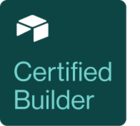Ok, I'm trying to build a product catalog and inventory management Airtable. I'm trying to work out the basic structure before I get too deep into adding all of my stuff.
We have components, with a Part #, which are sometimes sold on their own as a SKU.
We have Products, which are made up of multiple components, sometimes more than one quantity of each component in a product. These are sold as a SKU
We have Bundles, which are made up of multiple SKUs.
I want to bring in data from another source which shows SKUs sold by SKU and quantity (some are bundles, some are components, some are products), and I want to be able to drill down to the number of each component sold from that same data.
Any suggestions here?


